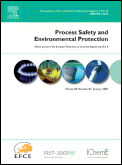
PROCESS SAFETY AND ENVIRONMENTAL PROTECTION
Scope & Guideline
Fostering interdisciplinary solutions for a sustainable future.
Introduction
Aims and Scopes
- Process Safety Management:
The journal emphasizes the importance of process safety management systems to prevent accidents in industrial settings, including the development of safety protocols and risk assessment methodologies. - Environmental Protection Technologies:
Research in this area focuses on technologies and processes aimed at reducing environmental impact, such as waste treatment, pollution control, and resource recovery. - Chemical and Biological Processes:
The journal explores chemical and biological processes for environmental remediation, including advanced oxidation processes, bioremediation, and the use of microbial fuel cells. - Energy Efficiency and Sustainability:
Studies on improving energy efficiency in industrial processes, including renewable energy integration, energy recovery systems, and the development of sustainable fuels. - Innovative Materials and Catalysts:
Research on new materials and catalysts that enhance process efficiency and safety, including nanomaterials for pollution control and advanced catalytic systems. - Risk Analysis and Management:
This includes methodologies for hazard identification, risk assessment, and the implementation of safer design practices in chemical processes.
Trending and Emerging
- Advanced Oxidation Processes (AOPs):
There is a growing emphasis on AOPs for wastewater treatment, highlighting their effectiveness in degrading persistent pollutants and the development of new catalysts. - Circular Economy Practices:
Research is increasingly focused on integrating circular economy principles into industrial processes, emphasizing waste valorization and resource recovery. - Machine Learning and AI Applications:
The application of machine learning and AI in process monitoring, risk assessment, and optimization is trending, with studies exploring their effectiveness in enhancing operational safety. - Sustainable Biofuel Production:
Research on biofuels derived from waste materials and biomass is gaining traction, reflecting a shift towards sustainable energy solutions. - Hybrid Energy Systems:
Innovative hybrid systems that combine different energy sources for improved efficiency and reduced environmental impact are increasingly featured in recent publications. - Nanotechnology in Environmental Protection:
There is a growing interest in the use of nanomaterials for environmental remediation and pollution control, indicating an emerging trend towards advanced materials science.
Declining or Waning
- Conventional Waste Treatment Methods:
There is a noticeable shift away from conventional waste treatment methods towards more innovative, sustainable technologies such as bioremediation and advanced oxidation processes. - Traditional Energy Sources:
Research related to traditional fossil fuel energy sources is declining as the focus shifts towards renewable energy solutions and sustainable energy systems. - Basic Process Safety Protocols:
The journal is increasingly prioritizing advanced safety protocols that integrate new technologies and methodologies, leading to a waning interest in basic, conventional safety practices. - Single-Factor Environmental Impact Studies:
Research that focuses solely on single-factor environmental impacts is being replaced by more comprehensive studies that consider multi-faceted interactions and sustainability assessments.
Similar Journals
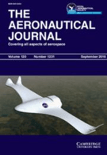
AERONAUTICAL JOURNAL
Exploring the frontiers of flight and technology.Aeronautical Journal, published by Cambridge University Press, is a premier scholarly journal dedicated to advancing the field of aerospace engineering. With a notable impact factor, this journal holds a strong position in the academic community, ranked #53 out of 153 in the Scopus category of Aerospace Engineering, placing it in the 65th percentile. The journal has been providing a platform for groundbreaking research since its inception in 1969, and continues to be a vital resource for researchers, professionals, and students involved in aeronautics. As a Q2 journal in the 2023 Aerospace Engineering category, it offers high-quality articles that cover a range of topics within the discipline, contributing to the ongoing discourse and innovation in aerospace technologies. Although not an open-access journal, it remains accessible to a vast readership through institutional subscriptions and partnerships. The Aeronautical Journal is a crucial publication for those seeking to stay at the forefront of aerospace research and development.
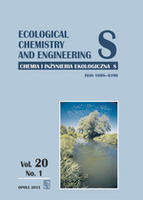
Ecological Chemistry and Engineering S-Chemia I Inzynieria Ekologiczna S
Fostering Interdisciplinary Collaboration for a Greener TomorrowEcological Chemistry and Engineering S, a prominent journal in the field of Environmental Chemistry and Engineering, provides a platform for innovative research and critical discussions surrounding ecological solutions and sustainable practices. Published by SCIENDO, this peer-reviewed journal is accessible to researchers and professionals dedicated to advancing our understanding of ecological systems and sustainable engineering practices. With an ISSN of 1898-6196 and an E-ISSN of 2084-4549, the journal has established itself in the academic community, reflected by its Q3 ranking in both Environmental Chemistry and Environmental Engineering categories as of 2023. Covering significant advancements from 2008 to 2024, it serves as an essential resource in advancing knowledge and fostering collaborations within interdisciplinary fields. Despite not offering open access, the journal remains an invaluable resource for researchers and students aiming to contribute to ecological sustainability strategies worldwide.

Environmental Chemistry Letters
Connecting global researchers for a greener tomorrow.Environmental Chemistry Letters, published by Springer Heidelberg, stands at the forefront of interdisciplinary research within the field of Environmental Chemistry. Since its inception in 2003, this esteemed journal has provided a dynamic platform for the dissemination of innovative studies and groundbreaking findings, contributing significantly to the understanding of chemical processes affecting the environment. With an impressive impact factor and ranking third out of 147 journals in Environmental Chemistry (98th percentile as per Scopus), it consistently attracts high-quality submissions from researchers around the globe. The journal maintains a Q1 category rank as of 2023, underscoring its prominent position in scholarly discourse. Environmental Chemistry Letters is dedicated to advancing knowledge on contemporary environmental issues, fostering solutions to mitigate chemical pollution, and promoting sustainable practices across various sectors. Researchers, professionals, and students alike will find invaluable resources within its pages as it continues to illuminate the path toward environmental sustainability.
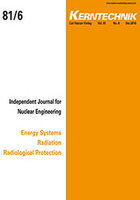
KERNTECHNIK
Advancing nuclear knowledge for a safer tomorrow.KERNTECHNIK is a distinguished journal specializing in the fields of Materials Science, Nuclear and High Energy Physics, and Nuclear Energy and Engineering. Published by WALTER DE GRUYTER GMBH, this journal has continuously contributed to advancing knowledge and research in nuclear technologies and related safety measures since its inception in 1969. With an ISSN of 0932-3902 and an E-ISSN of 2195-8580, KERNTECHNIK serves as a vital platform for academics and professionals seeking to delve into both theoretical and practical aspects of nuclear science and technology. Though listed in the Q4 quartile across multiple categories in 2023, the journal's commitment to publishing rigorously peer-reviewed articles ensures that it remains a respected resource, facilitating academic discourse and innovation. It is particularly aligned for those conducting research or working in safety, risk, reliability, and quality within the nuclear sector, and its extensive historical archive allows for in-depth exploration of evolving technologies. Aimed at foster cooperation between researchers, policymakers, and industry experts globally, KERNTECHNIK continues to play an important role in shaping the future of nuclear science.

ENVIRONMENTAL ENGINEERING SCIENCE
Catalyzing change through cutting-edge environmental research.ENVIRONMENTAL ENGINEERING SCIENCE is a leading journal published by MARY ANN LIEBERT, INC that provides a platform for pioneering research in the fields of environmental chemistry, pollution control, and waste management. With an ISSN of 1092-8758 and an E-ISSN of 1557-9018, this peer-reviewed journal aims to disseminate high-quality scientific studies that address critical environmental challenges. As evidenced by its 2023 category quartile rankings, it holds a notable position at Q3 in Environmental Chemistry and Pollution and Q2 in Waste Management and Disposal, highlighting its relevance and impact in these domains. Spanning over two decades from 1997 to 2024, the journal is dedicated to fostering innovations and promoting rigorous scholarship that can contribute significantly to sustainable environmental practices globally. Authors and researchers are encouraged to engage with this essential resource, which offers Open Access options to enhance the visibility and reach of their work. For those interested in advancing their understanding and practice within the environmental sciences, ENVIRONMENTAL ENGINEERING SCIENCE is an indispensable journal to consider.
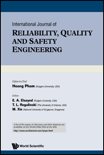
International Journal of Reliability Quality and Safety Engineering
Exploring Innovations in Reliability and Operational SafetyThe International Journal of Reliability Quality and Safety Engineering, published by World Scientific Publishing Co Pte Ltd, is a leading platform for disseminating cutting-edge research in the fields of reliability, quality, and safety engineering. With an impressive scope that spans across aerospace, electrical engineering, nuclear energy, and industrial manufacturing, this journal serves as a critical resource for researchers and professionals aiming to enhance system dependability and operational excellence. Indexed in Scopus, it holds a respectable Q3 ranking across various categories in 2023, reflecting its growing influence in the academic community. Although currently not open access, it provides ample opportunities for scholars to publish impactful studies from its extensive database, which has evolved since 1996. The journal's commitment to advancing knowledge in reliability and safety engineering makes it a pivotal resource for those dedicated to improving engineering practices and protocols worldwide.
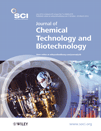
JOURNAL OF CHEMICAL TECHNOLOGY AND BIOTECHNOLOGY
Elevating Research Standards in Chemical Technology and BiotechnologyJOURNAL OF CHEMICAL TECHNOLOGY AND BIOTECHNOLOGY, published by WILEY in the United Kingdom, serves as a premier platform for research at the interface of chemical engineering and biotechnology. With an ISSN of 0268-2575 and E-ISSN 1097-4660, this journal has established itself as a crucial resource for scholars and professionals, evidenced by its impactful categorization in the Q1 and Q2 quartiles across multiple domains such as Inorganic Chemistry, Biotechnology, and Renewable Energy. The journal encompasses a broad scope that includes innovative research on sustainable technologies, pollution management, and advances in chemical syntheses, making it essential for those pursuing cutting-edge developments in these disciplines. Researchers and practitioners benefit from its comprehensive coverage, as it includes insightful articles, reviews, and case studies that collectively push the boundaries of contemporary science and engineering. With a ranking of Q2 in its various categories and significant percentiles in key fields, the journal stands as a beacon for high-quality scholarship, eligible for impact in both academia and industry.

CHEMICAL ENGINEERING & TECHNOLOGY
Connecting Theory and Practice in Chemical EngineeringChemical Engineering & Technology is a prestigious journal published by Wiley-VCH Verlag GmbH, focusing on the evolving field of chemical engineering and its related disciplines. With an ISSN of 0930-7516 and E-ISSN of 1521-4125, the journal has established a robust platform for researchers and practitioners to share pioneering studies and innovative technologies within the field. Classified in the second quartile (Q2) across multiple categories such as Chemical Engineering, Chemistry, and Industrial and Manufacturing Engineering, it holds an impressive rank in the Scopus database, indicating its significant contribution to the academic community. The journal's commitment to advancing knowledge is reflected in its extensive convergence of research from 1987 to 2024, providing a comprehensive archive of scholarly work. Researchers, professionals, and students benefit from the latest insights and findings, enriching the dialogue around chemical processes and methodologies. Though it operates under a traditional subscription model, the accessibility of this journal is crucial for those engaged in both theoretical and applied aspects of chemical engineering.

JOURNAL OF CHEMICAL ENGINEERING OF JAPAN
Advancing Chemical Innovation in JapanJOURNAL OF CHEMICAL ENGINEERING OF JAPAN is a distinguished academic publication in the field of chemical engineering and chemistry, published by Taylor & Francis Ltd. With its ISSN 0021-9592 and E-ISSN 1881-1299, this journal has been a vital resource for researchers and practitioners since its inception in 1968 and continues to provide essential insights and advancements through 2024. The journal operates under an Open Access model as of 2023, promoting wider dissemination of research findings and encouraging collaboration within the global scientific community. Currently categorized in the Q4 quartile for both Chemical Engineering and Chemistry (miscellaneous) in 2023, it ranks within the lower percentiles of its respective fields, offering a platform for emerging scholars to publish their work and gain visibility. As part of Japan's academic landscape, it addresses numerous aspects of chemical engineering, fostering innovation and technical development that contribute to the industry's growth. Engaging with this journal is paramount for those looking to stay informed on the latest research trends and applications in chemical processes.

JOURNAL OF LOSS PREVENTION IN THE PROCESS INDUSTRIES
Empowering industries through cutting-edge risk management research.The Journal of Loss Prevention in the Process Industries, published by Elsevier Science Ltd, stands as a vital platform for advancing knowledge and practice in risk management and safety within the fields of chemical engineering, industrial and manufacturing engineering, and beyond. With an H-Index reflecting significant scholarly influence, this journal features a diverse scope, addressing critical issues from process safety and reliability to innovative solutions for energy efficiency. Ranking in the second quartile (Q2) across several categories, including Control and Systems Engineering and Safety, Risk, Reliability and Quality, it highlights the interdisciplinary nature of loss prevention strategies. Researchers and professionals can access this journal through subscription, ensuring they stay at the forefront of developments from 1988 to 2024. As a hub of cutting-edge research, the journal not only aims to disseminate high-quality studies but also fosters a community dedicated to enhancing safety and operational excellence in process industries worldwide.